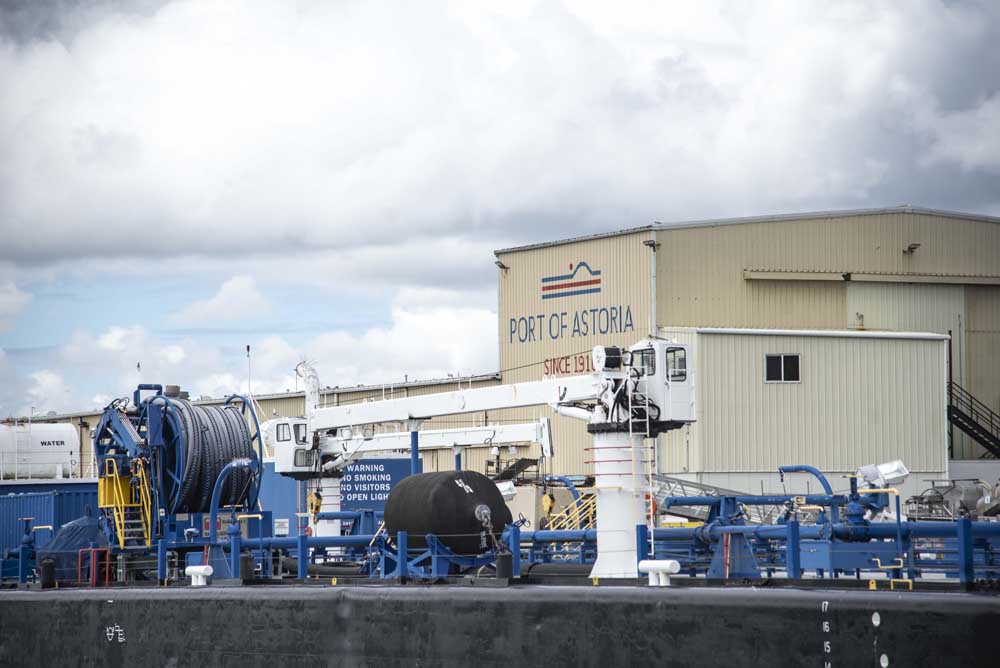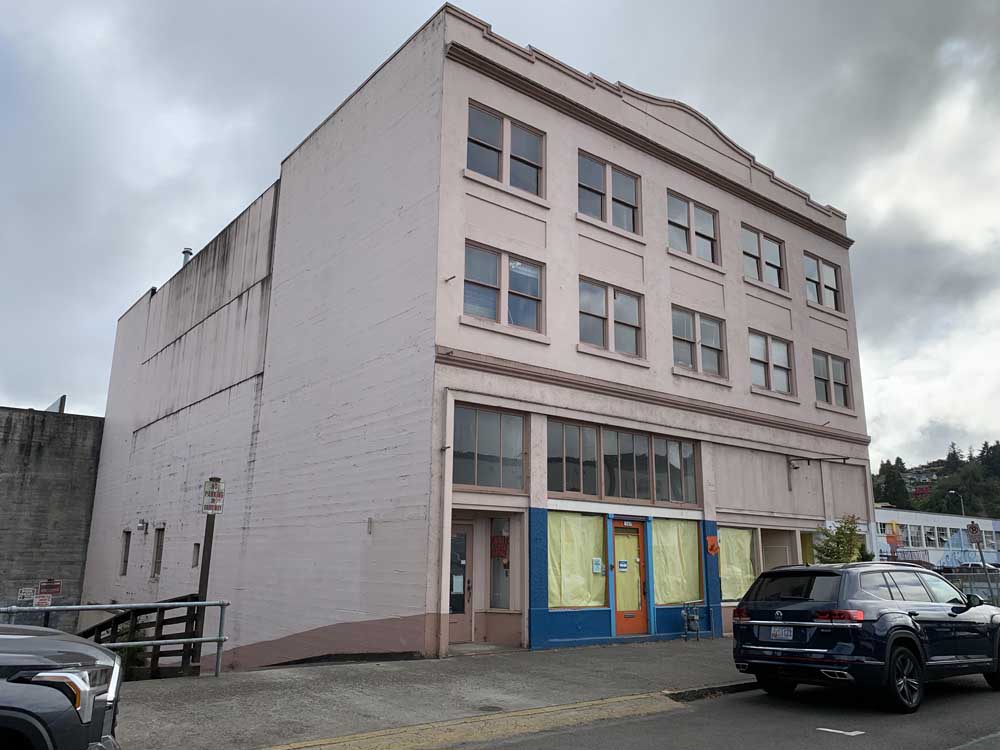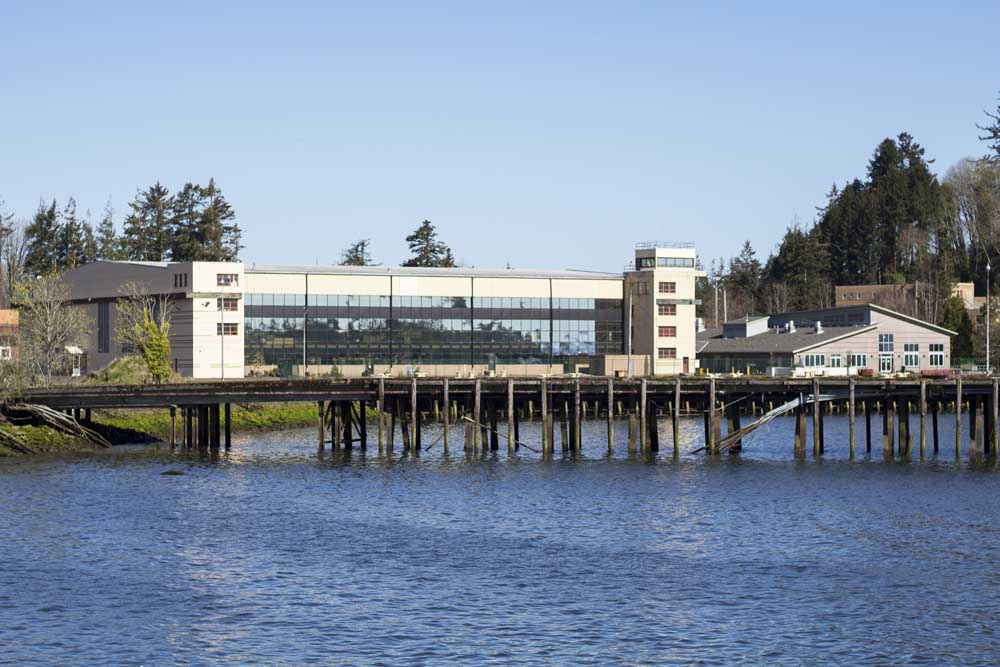Maritime Museum unpacks the history of the Barbey company
Published 4:00 pm Wednesday, January 23, 2013
The Columbia Rivers rich maritime history is preserved in display cases and on the walls of the Columbia River Maritime Museum.
But now the museum would like to take preservation a step further: saving and sharing the skills and trades that produced artifacts on display.
The Barbey Maritime Center for Research and Industry will open Friday at the former railroad depot and hold workshops and classes on boat building and other maritime skills.
The center is named after the Barbey family, which ran the Barbey Packing Company until the early 1970s. The family-run cannery was one of the largest during the early years of Astorias canning industry.
The Barbey family has a long history in Astoria, said Sam Johnson, executive director of the museum. He said they contributed both economically and culturally to the city for more than 50 years.
History of Barbey Co.
The Barbey Packing Company was a family run business that lasted much longer in Astoria than many others. It competed with Bumble Bee Foods and Union Fishermens Cooperative Packing Company for much of the early 20th century.
Each of those were very good companies, and they were all vying with each other, said Irene Martin, an author and historian of Columbia River fisheries.
They had similar products and so they were competing for that raw product, and at the same time they were competing for markets as well, she said.
The Barbey company was established by Henry Barbey, who purchased the Pillar Rock cannery in 1912. Prior to purchasing the cannery, he inherited a Portland seafood company from his uncle. He began investing more in extraction and packing in the Astoria region, changing the seafood company name to the Barbey Packing Company in 1919.
The company initially relied heavily on crews who used beach seine nets for harvesting fish before that type of gear was outlawed on the Columbia.
Out on Sand Island, horses hauled loads of salmon to shore with the large net, and gillnet fishermen clashed with them on one occasion.
In 1930, gillnet fishermen spread out their nets in front of the seines on Sand Island and drove away fish from crews. Barbey happened to be there that day and filed legal suits against gillnetters in a Washington court.
But as certain gear types and methods were outlawed, the Barbey company did use gillnet fishermen for harvesting salmon, and had a fleet at one point, according to Martin.
In 1948, the company became an Oregon corporation, with Graham Barbey, Henrys son, as the president and Henry as the vice-president.
Bu then things changed. Construction of dams on the Snake River, an area that had large spawning grounds, sent salmon runs into a tailspin, said Martin.
Unlike Bumble Bee and Union Fish, Barbey did not have a huge presence in Alaska, which is where many canneries moved to remain viable.
You had a huge fleet and huge canning crews as well, Martin said about Barbeys impact on jobs in Astoria.
In 1974, the company was sold to Joe Bakkensen, Ted Bugas and Wendell Wyatt, three businessmen who had ties to the industry. (Wyatt was to become the regions member of Congress.) Graham Barbey had fought with cancer in 1970 and had less energy to put toward the companys operation. He had hired Bakkensen at that time. They became friends and Graham assisted with the transfer by reducing the price dramatically, Bakkensen said.
The packing operation changed ownership with multiple companies before being shut down in 1981.
It was a family business that survived a long time, Martin said. She added that there were other family owned operations on the Columbia but they didnt last past the 1950s.
Barbey lasted longer into the 20th century, really, than any of them, she said.
Depot renovation
The Barbey family gave $250,000 to start the depot project. The donation helped the museum begin to restore the aging brick structure.
It would have made it much more difficult to get it started, said Johnson, the museums director.
The Barbey family financially supported the Maritime Museum since its inception, he said. Graham Barbey served on the museums board several times and was involved with the museum until his death in 2002.
Originally constructed in 1923, the depot had been in disrepair for years after serving the area and receiving passenger trains from Portland. The museum began renovations on the structure in October 2011, with nearly $2.5 million being put forward for sprucing it up.
The museum partnered with instructor Lucien Swerdloff and his historic preservation and restoration students of Clatsop Community College. The group worked on restoring the inside and out and the college program will be able to use the woodshop planned for the east wing.
Skills and training
The Barbey Maritime Center is set up to maintain the construction processes that have become part of maritime life on the lower Columbia.
The center will host workshops that will teach participants how to build boats and nets used for fishing in the region. Johnson said the museum needed to adopt a more comprehensive approach to preservation.
Whats missing is the preservation of the process itself, he said. The jobs not complete if you dont have both.
Classes demonstrating skills and trades will begin in May.
The museum is partnering with the Chinook Indian Nation for classes that will instruct how to make traditional Native American nets used for fishing.
One of our major focuses will be on the Native American culture, he said.
Other classes will include carving and woodworking. Boat building classes will include the construction of a traditional lapstrake boat, which originated in Scandinavia and is uniquely designed.
An old machine from the 1930s, used for producing copper nails for the boat, has been reconstructed for use at the center. The copper nails hold together the planks, which cover or lap one another tightly, securing the inside and not allowing any water to leak inside.
The center will also work to document the detailed construction of various boats, including old and new gillnet boats.
Slowly but surely well mark down and take the lines and measurements of boats in private hands, said Johnson and added that if they disappear theyll be on record.
The first boat
A small wooden boat is already being measured and worked on at the building.
Sea Scout Ship 635, Flying Cloud, is the designation for vessels used by the local chapter of Sea Scouts. The group found a beat-up flatiron skiff they plan to use to help construct a newer version.
The blue paint is chipped and the wood is rotting, but members are taking the measurements of the vessel so that they can reconstruct it. The project in the east wing is the first boat building operation for the center.
Josh McConnell, the president of the chapter, and the skipper, Hal Nauman, plan to take the newly built skiff out for group camping trips once it is finished.
Fridays ribbon cutting
On Friday people will be able to take a look at the building for themselves. Johnson will speak, as well as museum trustees. A ribbon cutting is planned as well as a tour of the location.
The classes held at the center will be open to the public and members of the museum. Johnson is also counting on people to bring old photographs of the depots past.





